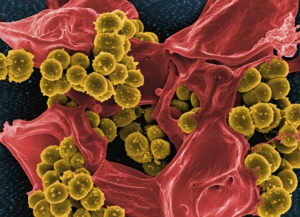
How microplastic particles get into the body
Weathered microplastic particles may pose a greater risk than pristine ones, suggests a study of German researchers on mouse cells.
Microplastic particles exposed to freshwater or saltwater environments for several weeks are about ten times more likely than pristine particles to be absorbed by mouse cells, due to a crust of microorganisms and biomolecules that forms on the particles’ surfaces. According to a new study, this crust acts as a biomolecular Trojan horse, leading cell membranes to engulf the plastic fragments and usher them into the cell. From there, the particles may infiltrate an organism’s circulatory system and tissues, triggering inflammation.
Most studies of microplastics’ ability to infiltrate living tissues have involved pristine particles, which do not represent the particles polluting our nature. To investigate how environmental exposure affects how readily microplastic particles can be internalised by cells, Anja Ramsperger at University of Bayreuth, Germany, and colleagues incubated spherical plastic particles in freshwater from an artificial pond; saltwater from an aquarium; or sterile, ultrapure water for two or four weeks. They then exposed the particles to mouse cells with fluorescently labeled actin, a part of the cytoskeleton involved in particle internalisation, for a total of about three hours.
This labeling enabled easy identification of fully internalised particles, which were entirely surrounded by the glowing actin. Ramsperger et al. observed that microplastic particles exposed to either the freshwater or saltwater environment were internalized by mouse cells ten times more frequently than pristine particles, and with no significant difference in internaliszation rates between these non-pristine particle types. These findings suggest that weathered microplastics – such as those in the soupy cesspool of the Great Pacific Garbage Patch – may pose a far greater health risk to organisms than untarnished particles.




 Genentech Corp. / Roche
Genentech Corp. / Roche